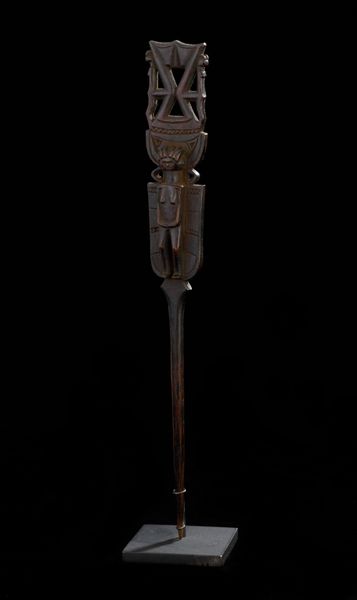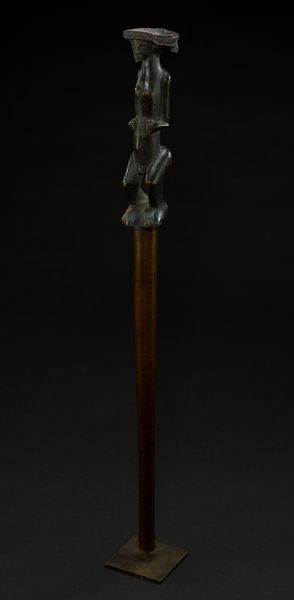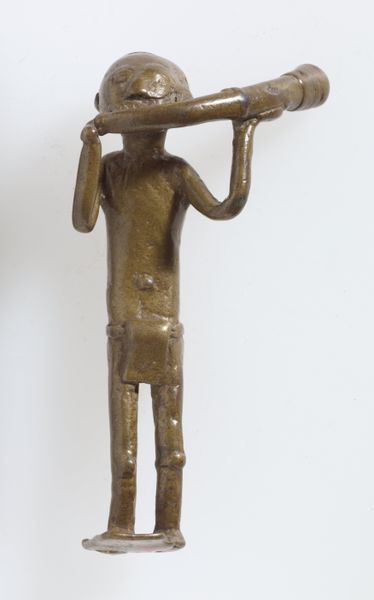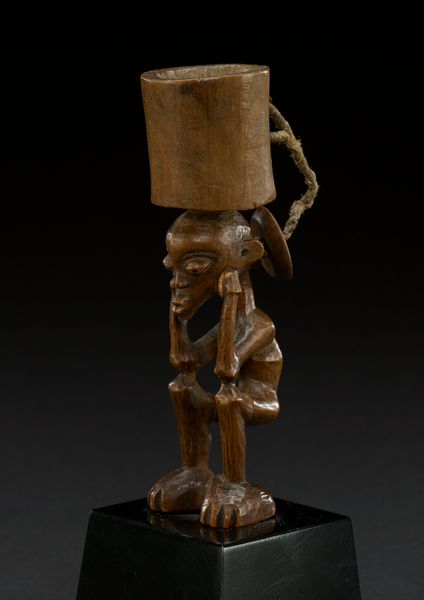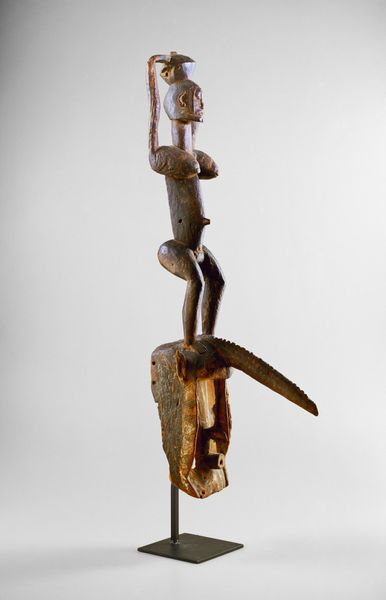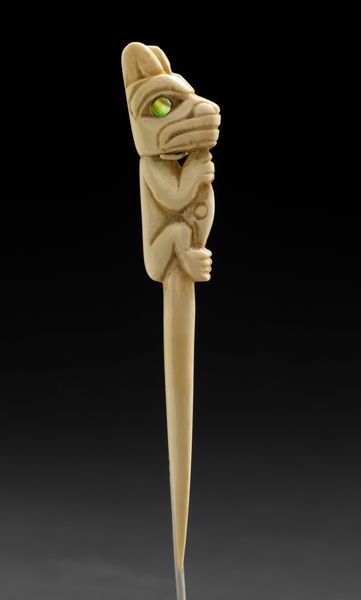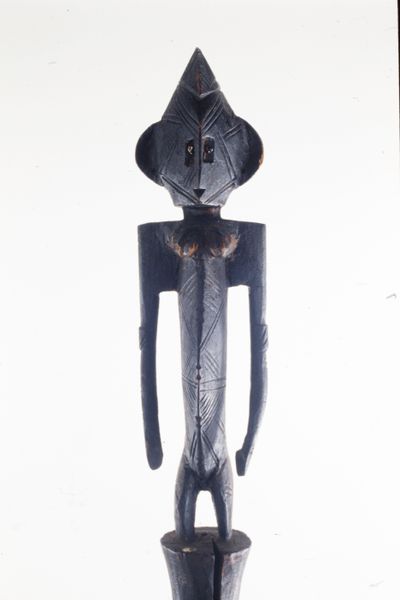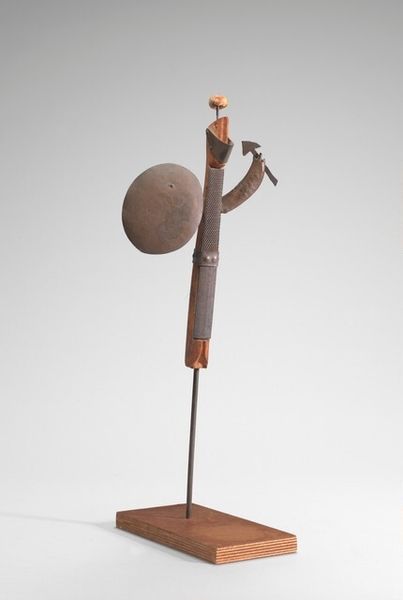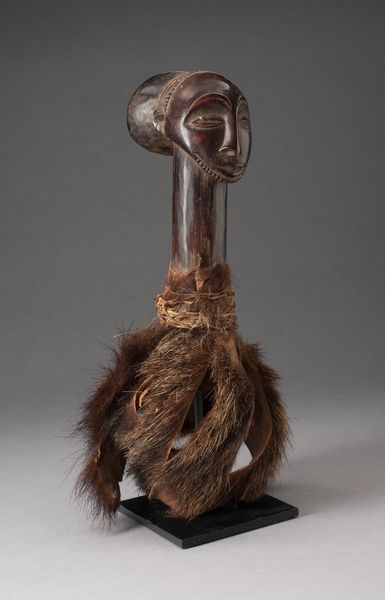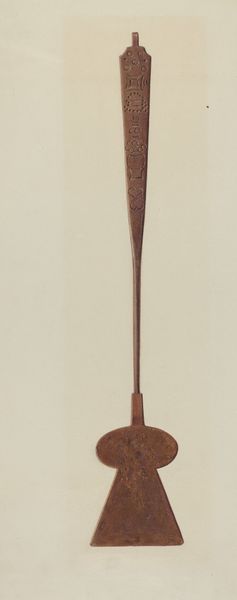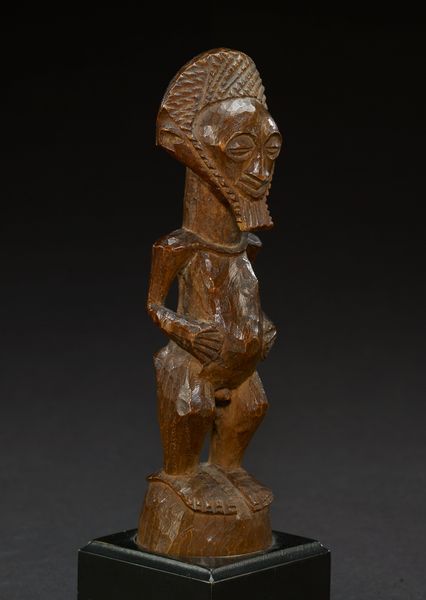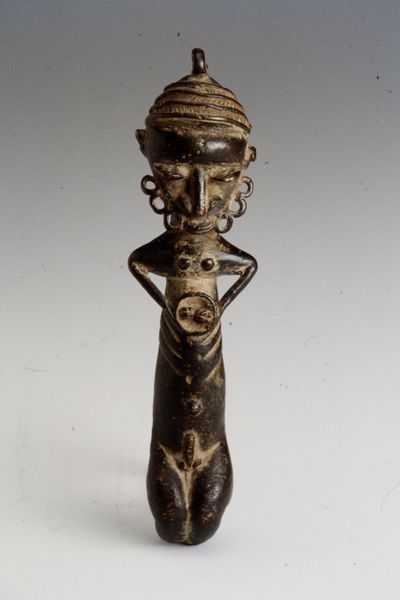
sculpture, wood
#
african-art
#
sculpture
#
figuration
#
sculpture
#
wood
Dimensions: 27-1/4 x 3-7/16 x 2-7/16 in. (69.2 x 8.7 x 6.2 cm)
Copyright: Public Domain
Curator: Immediately, I'm struck by the upward surge of its verticality, a formal expression culminating in that expanded, patterned apex. There's something deeply reverential in this compositional choice. Editor: You’re looking at a Holo-Holo Staff, carved from wood, and it’s believed to date back to between 1875 and 1900. What I find fascinating here is how figuration combines with more abstract forms, as seen in the intricate, repetitive patterns near the top. Curator: Precisely. Those repeated chevrons and linear motifs read almost like a woven textile rendered in wood. There’s an echoing, vibrating sensation embedded into the composition, setting up a rhythm the rest of the work responds to. But tell me, what does it represent? Editor: It is most likely that the Holo-Holo people of the Democratic Republic of Congo used it as an emblem of power and status. The female figure carved at the staff’s center suggests notions of fertility and matrilineal descent. The ancestral mother, perhaps, transmitting authority across generations? Curator: So, a visual link in the chain of being, rendered palpable. Observe the supplicating gesture of the hands of the woman. There's something profoundly earnest and exposed in their presentation. A display of open offering to the one that carries and supports the lineage through time, a beautiful example of human and geometric unity! Editor: What I also note is how the sculpture's formal language doesn’t just embody but enhances that symbolic reading. The simplification of the figure, its elongation— it all reinforces the feeling of upward movement, towards the ancestral or divine realm. The materiality, this particular quality of dark wood, confers the somber and serious aura we pick up on. Curator: It’s a physical manifestation of heritage, memory carved into existence. We’ve looked at its symbolic importance but looking at the craftsmanship we begin to understand a society's relationship to heritage, nature, time, and authority through an intimate symbolic lens. Editor: It seems clear that studying the intersection between form and cultural memory can create endless streams of interpretation for one piece. This staff opens dialogue about much more than just one cultural group; it speaks about power itself.
Comments
No comments
Be the first to comment and join the conversation on the ultimate creative platform.
